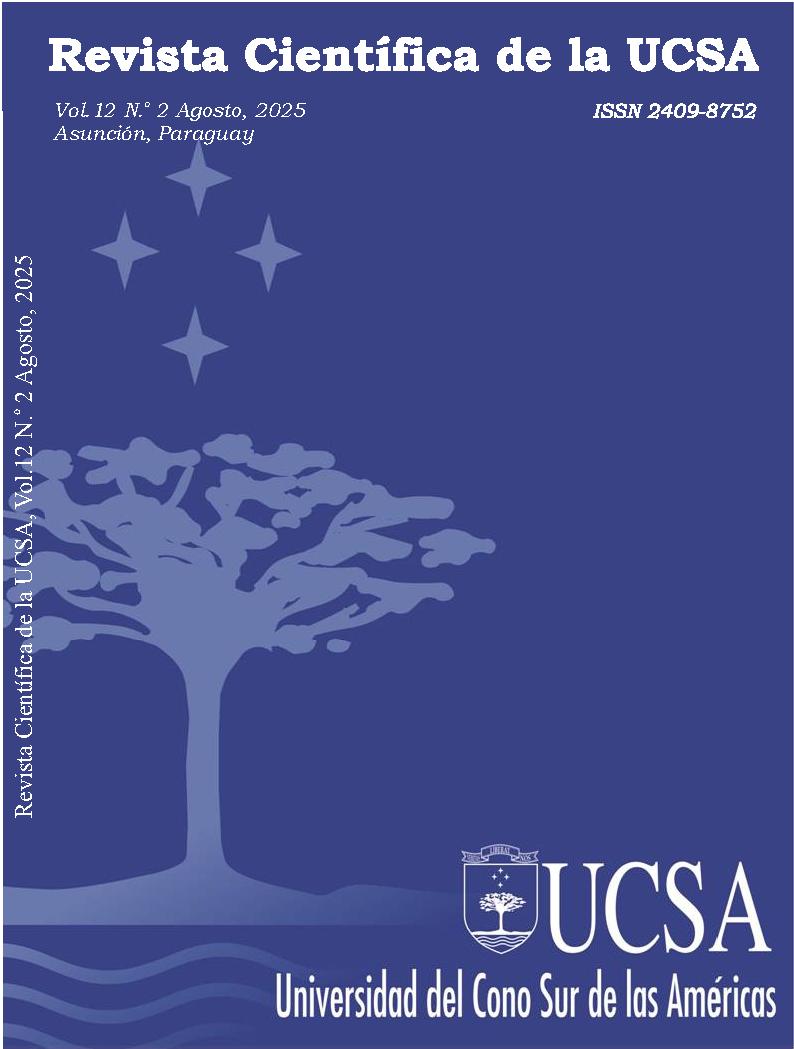Software for concentrating solar systems: experimental validation
Main Article Content
Abstract
This study presents advancements in the development of simulation software for determining thermophysical parameters in solar concentration systems, focusing on thermal energy supply for heat-driven processes. The new version introduces significant improvements, including the incorporation of non-concentrated solar gain (direct incidence on the absorber) and end-losses (non-illumination losses). Additionally, a condensate factor was added to quantify non-evaporated fluid. The user interface was redesigned, changing the vertical input fields to a horizontal layout. Also, a field for equipment orientation (north/south or east/west) was included. To validate the software, extended experimental measurements were conducted over five days of energy generation using an 11 m² parabolic trough concentrator. Linear regression models were applied, and metrics such as RMSE%, MAE%, and MAPE% were used, yielding acceptable values that confirm the software's accuracy and practical applicability.
Article Details
Section
How to Cite
References
Aparicio, H., Dellicompagni, P., Cadena, C. (2023). Software para el estudio del desempeño térmico de sistemas de concentración solar. Avances en Energías Renovables y Medio Ambiente. Vol. 27, pp. 146-157. ISSN 2796-8111. Disponible en https://portalderevistas.unsa.edu.ar/index.php/averma/article/view/4618.
Balado, E. (2011). Prototipo de campo de colectores solares cilindro-parabólicos para generación de calor a alta temperatura. Proyecto final de carrera Universidad Carlos III de Madrid. Departamento de Ingeniería Térmica y de Fluidos. https://e-archivo.uc3m.es/handle/10016/12857.
Blair, N., Dobos, A., Freeman, J., Neises, T., Wagner, M., Ferguson, T., Gilman, P., Janzou, S. (2014). System Advisor Model. SAM 2014.1.14: General Description. NREL/TP-6A20-61019. National Renewable Energy Laboratory. Golden. CO. http://www.nrel.gov/docs/fy14osti/61019.pdf .
Blanco, M., Amieva, J., Mancilla, A. (2005). The tonatiuh software development proyect: An open source approach to the simulation of solar concentrating systems.
Clifford, K. H. (2008). Software and Codes for Analysis of Concentrating Solar Power Technologies. Sandia Report. 8053. https://doi.org/10.2172/946571.
Dellicompagni, P., Aparicio, H. E., Franco, J., López Ruiz, C. B. (2024b). Pérdida de calor en el absorbedor de un concentrador cilindro parabólico de mediana entalpía. Energías Renovables y Medio Ambiente. En prensa (Aceptado el 2-Septiembre-2024). [ Links ]
Dellicompagni, P., Franco, J. (2019). Potential uses of a prototype linear Fresnel concentration system. Renewable Energy. Volume 136, Pages 1044-1054. https://doi.org/10.1016/j.renene.2018.10.005.
Dellicompagni, P., Franco, J., Aparicio, H., Linares, J. (2024a). Concentrador solar cilindro parabólico de mediana entalpia: Ensayos de operación y caracterización. Energías Renovables y Medio Ambiente. Vol. 53, pp. 11-17. ISSN en línea 2684-0073. https://portalderevistas.unsa.edu.ar/index.php/erma/article/view/4751.
Duffie, J. A., Beckman, W. A. (2013). Solar Engineering of Thermal Processes. Chichester: John Wiley and Sons Ltd. ISBN: 9780470873663. Online ISBN: 9781118671603.
Fan, M., You, S., Xia, J., Zheng, W., Zhang, H., Liang, H., Li, X., Li, B. (2018). An optimized Monte Carlo ray tracing optical simulation model and its applications to line-focus concentrating solar collectors. Applied Energy. Volume 225. Pages 769-781. https://doi.org/10.1016/j.apenergy.2018.05.067.
Hyndman, R. J., Koehler, A. B. (2006). Another look at measures of forecast accuracy, International Journal of Forecasting, 22 (4), pp. 679-688. https://doi.org/10.1016/j.ijforecast.2006.03.001.
Jafrancesco, D., Cardoso, J., Mutuberria, A., Leonardi, E., Les, I., Sansoni, P., Francini, F., Fontani, D. (2018). Optical simulation of a central receiver system: Comparison of different software tools. Renewable and Sustainable Energy Reviews 94, 792-803. https://doi.org/10.1016/j.rser.2018.06.028.
Kaddour, A., Belgasim, B., Agagna, B., Behar, O., Achouri, A., Nedjimi, M., Tlili, S., Daoui, H. (2023). A review of tools dedicated to the modeling and simulation of concentrating solar systems. Neuro Quantology. Volume 21. Issue 6. Page 1630-1651. https://www.neuroquantology.com/media/article_pdfs/15868_Neuroquantology_01-32-26.pdf.
Kambezidis, H. D. (2012). ComprehensiveRenewable Energy. Volume 3, Pages 27-84. ISBN 978-0-08-087873-7.
Montaño, J., Palmer, A., Sese, A., Cajal, B. (2013). Utilizando el índice R-MAPE como medida resistente de precisión de pronóstico. Psicothema. Vol. 25 (4). 500-506. ISSN 0214 - 9915. doi: 10.7334/psicothema2013.23.
Vouros, A., Mathioulakis, E., Belessiotis, V. (2020). Modelling the overall efficiency of parabolic trough collectors. Sustainable Energy Technologies and Assessments. Volume 40, 100756. https://doi.org/10.1016/j.seta.2020.100756.
Zou, B., Dong, J., Yao, Y., Jiang, Y. (2017). A detailed study on the optical performance of parabolic trough solar collectors with Monte Carlo Ray Tracing method based on theoretical analysis. Solar Energy. Volume 147. Pages 189-201. https://doi.org/10.1016/j.solener.2017.01.055

